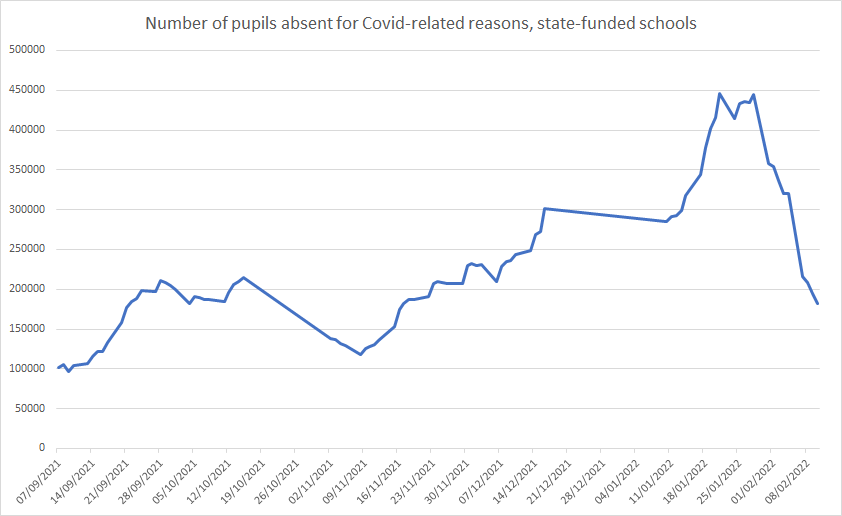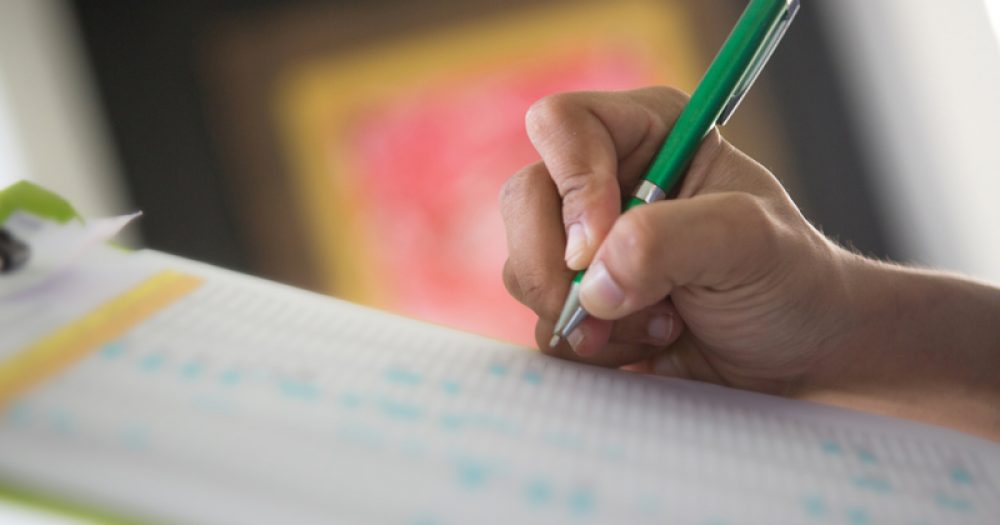School attendance has reached its highest level since November after Covid-related absence among pupils fell by 43 per cent, new data suggests.
But more than 180,000 pupils still missed school due to Covid on February 10, and staff absence remained at between 7.3 and 7.5 per cent.
Department for Education attendance survey data estimates that on-site attendance in state-funded schools reached 90.5 per cent in the week ending February 10, the first time it has been above 90 per cent since November 18 last year.
However, secondary schools are still faring worse than primaries, with attendance of 87.3 per cent on February 10, compared to 93.2 per cent at primary.
Special school attendance is also lower, at 82.3 per cent, than mainstream schools, though attendance rates increased across all types of school.
180,000 pupils off because of Covid
The increasing attendance rate has been driven by falling Covid absences.
On February 10, 182,000, or 2.2 per cent of pupils were absent for Covid-related reasons, down 43 per cent from 320,000, or 3.9 per cent a week before.
Today’s data does not include last week as many schools were on half term.
The number of pupils off with a confirmed case dropped from 250,000 to 136,000 over the same period, while the number of suspected cases fell from 34,000 to 22,000.

Geoff Barton, from the ASCL leaders’ union, said he hoped the data “means a corner has been turned in what has been a very difficult first half of the spring term”.
But he said the government’s lifting of “virtually all control measures” ran the risk of creating a “new wave of transmission and disruption in our schools and colleges”.
“We hope that is not the case, but vigilance is important.”
DfE withdraws weekly testing advice
It comes after the government withdrew its advice to staff and pupils in mainstream secondary schools to test at home twice a week, and announced that mandatory self-isolation for positive cases will end on Thursday.
Staff and pupils will still be advised to isolate if they test positive or have symptoms, but they will not have a legal responsibility to do so. Weekly testing is still advised for staff and pupils in special schools, alternative provision and SEND units in mainstream schools.
It also comes after the latest Office for National Statistics data showed how infection levels among school pupils have fallen in recent weeks, though primary-aged pupils remain the most infected group.
It estimated that around 7.6 per cent of two to 11-year-olds tested positive in the week to February 12, down from a high of almost 15 per cent in late January. Infections among secondary pupils also fell from almost 10 per cent to 6.3 per cent.
Paul Whiteman, general secretary of the NAHT school leaders’ union, said he hoped to see the downward trend in absences continue, but warned the government “needs to do more to explain to the public the actions they are now supposed to be taking to keep themselves and others safe”.
“Although the legal responsibility for testing and isolation has been removed, we all still have a personal responsibility to keep each other safe. Schools and families will still need to co-operate to minimise disruption and keep schools open.”
Staff absence still above 7%, with some schools worse-hit
But today’s data shows staff absence remains high. Around 40,000, or 7.5 per cent of teachers and school leaders were absent on February 10, with 2.8 per cent off because of Covid.
And 7.3 per cent of teaching assistants and other staff were off on February 10, with Covid absence at 2.5 per cent.
Staff absences also remain concentrated in some schools. On February 10, 17 per cent of state schools reported having more than 15 per cent of teachers and leaders off, while 12 per cent said they had 15 per cent of support staff absent.
Primary schools, special schools and alternative provision settings are also much more likely to report high levels of absence than secondary schools.
On February 10, 32 per cent of AP settings, 25 per cent of special schools and 18 per cent of primary schools reported teacher and leader absence of over 15 per cent, compared to just 7 per cent of secondary schools.
And 7.3 per cent of AP settings reported teacher absence of over 30 per cent, compared to 2.9 per cent of special schools, 3.2 per cent of primary schools and just 0.3 per cent of secondary schools.















Your thoughts